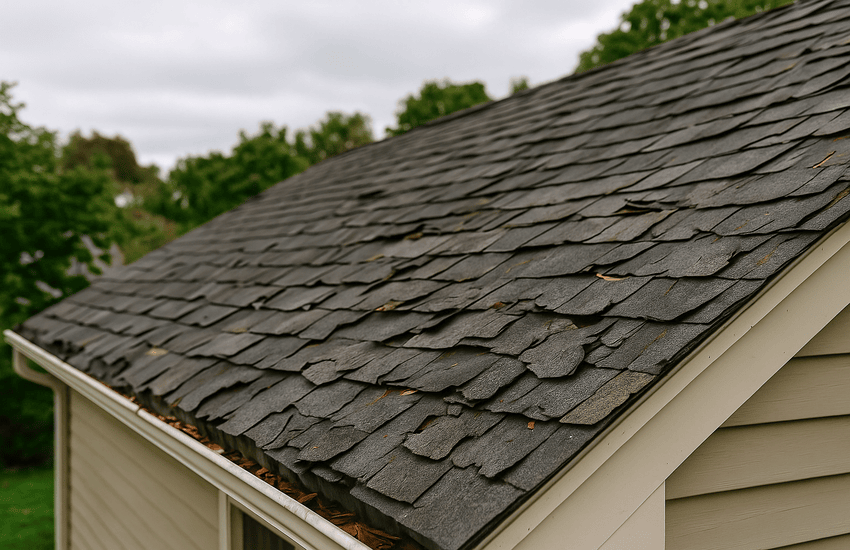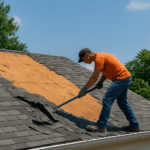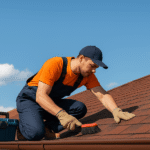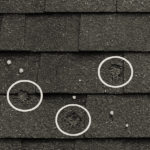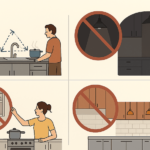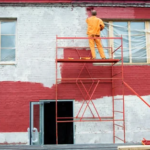You should know that the roof is your house’s first defense. It protects you from rain, wind, blazing sun, and hail. But nothing lasts long in front of time, not even the toughest roof. In Sachse, Texas, heavy storms and heat strokes often create leaks and damage to the house roof. Sometimes, the damage is so serious that homeowners need to replace it.
That’s why, in this blog, we’ve talked about the ten signs that indicate your roof needs to be replaced. Make sure you thoroughly check them all.
1. Roof Is Over 20 Years Old
Asphalt roofs typically last between 15–20 years. If your roof is older than that, the material may be worn even if it looks fine from the ground. Prolonged exposure to the hot Texas sun accelerates aging. Shingles lose granules, and the waterproofing layer degrades over time. Even small cracks in aged shingles can let water in.
At this point, sub‑roofing layers can be compromised. An inspection by professional workers is smart for roofs over two decades old. Waiting too long risks sudden leaks or structural issues that require more costly emergency fixes.
2. Curling, Buckling, or Missing Shingles
Shingles start curling as they age and lose their sealant layer. Buckling shows weak spots where shingles can lift in the wind. Missing shingles leave bare spots exposed to rain and UV damage. In Sachse storms, wind can catch loose shingles and tear them off. Moisture then gets under neighboring shingles, spreading damage.
Even minor wind damage can spread quickly. You might think patching helps, but large areas of curling or missing shingles usually mean deeper problems. A full-roof replacement often saves time and money compared to endless repairs.
3. Granules in Gutters
Find black, sand-like granules in your gutters? These come from worn shingles. Granules protect asphalt from sunlight and water. Once shingles start losing granules, they weaken fast. Without that protective layer, shingles become brittle and crack. Granule loss is gradual, so you might not notice until the gutters clog.
Check after heavy storms or seasonal clean-ups. If you see granule buildup along with bald shingles, your roof is nearing the end of its life. Replacement becomes part of maintenance, ensuring proper water runoff and insulation.
4. Interior Leaks or Water Stains
Water stains on your ceiling or walls are a red flag. A single stain shows you have a leak, and often, one leak means more. Even a small drip can cause attic mold or rot. That weakens wooden rafters and sheathing, risking structural damage. Replace stained drywall and repair the roof layer above.
A leaky roof may feel manageable, but moisture can spread behind walls and foster mold growth. Symptoms like a musty smell or peeling paint show it’s not just surface water. Replace the entire roof when leaks run deep or appear in multiple spots.
5. Damaged Flashing
Roof flashing seals vulnerable junctions around chimneys, vents, skylights, and valleys. It’s thin metal that protects roof seams. Over time, flashing can rust, crack, or pull away. That lets water sneak in at roof joints, one of the most common leak sources.
When flashing goes bad, water seeps under shingles and into the attic framing. Patch repairs might hold briefly, but a full replacement ensures flashing is installed correctly. That’s vital in Chester and Collin County, where storms strike fast and rain runs hard along pitched seams.
6. Sagging Roof Deck
If your roof deck sags or dips, that’s serious. It means the plywood or rafters are compromised, likely due to rot or water damage. Standing water, leaks, or poor ventilation can soak wood over time. Walking on a sagging roof is unsafe and causes structural stress.
Even small soft spots in the attic floor can spread. Replacing the roof lets professionals replace damaged wood and re-level the deck. That restores the structure’s strength and safety. Don’t patch a sag; remove the root cause with full deck repair.
7. Daylight Visible in Attic
Go into your attic during daylight hours. If you see sunlight through the roof or at the eaves, that’s a sign of holes. These can be from pests, fastener holes, or lifted shingles. Any light = potential water entry. Even pinhole gaps allow moisture, which leads to wood rot and insulation damage.
It’s not enough to patch visible holes. Full-roof replacement provides consistent coverage and seals these tiny gaps. One small leak can become a big problem; catch it early with replacement before it costs more.
8. High Energy Bills
Sudden spikes in air-conditioning or heating costs can signal a failing roof. A tight roof insulates your attic and home. But a roof nearing end-of-life can leak air out. The insulation below the roof may also have shifted, or hidden rot may exist. Air leaks force your HVAC to work harder to maintain temperature.
You should monitor your utility bills. If roofing insulation is degraded or absence of soffit vents, feel drafts in the attic. A roof replacement with proper ventilation and new underlayment reduces energy usage and bills over time.
9. Moss, Mold, or Algae Growth
Green, white, or black streaks on your roof show biological growth. Moss retains moisture against shingles, allowing rot. Mold and algae can stain and weaken shingle integrity. These organisms thrive in shaded, humid conditions, commonly under tree canopies in Sachse yards.
Removing them helps short term, but the underlying damage stays. A thorough replacement includes moss-resistant shingles and proper attic venting. That prevents regrowth and protects against moisture damage. Clean roof appearance reflects deeper health beneath.
10. Broken Ridge Caps or Vent Damage
Ridge caps seal the peak of a pitched roof. Vents allow attic airflow. Damaged ridge caps, loosened, cracked, or missing, fail to keep out water. Similarly, vent caps can crack or blow off in storms. Poor ridge sealing leads to wind-driven rain entering at the ridge. Damaged vents cut attic ventilation, trapping heat and moisture.
A common fix is replacing ridge vents and caps, but often they’re piecemeal. Full roof replacement allows installation of properly aligned ridge systems and breathable vents, which are key to roof longevity and indoor comfort.
Final Thoughts
Your roof protects your home, your family, and your investment. Watching for these 10 warning signs helps you act before damage becomes expensive or dangerous. In Sachse, Texas, storms, sun, and heat test your roof every day. And replacing it at the right time could save thousands in repairs.
If you spot curling shingles, leaks, rot, sagging decking, or moss, don’t wait. You deserve a sound, efficient roof over your head. If you need a local, trusted team in Sachse, reach out to us at Oak Custom Remodeling. We offer free inspections and honest advice tailored to Texas homes.


